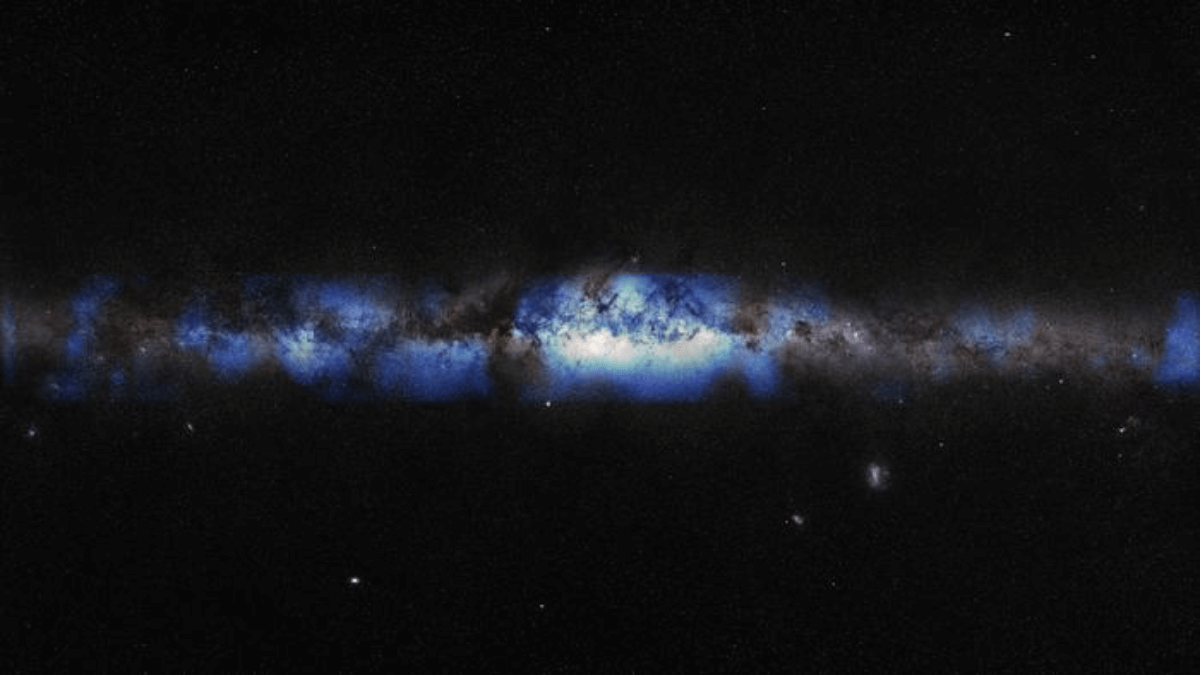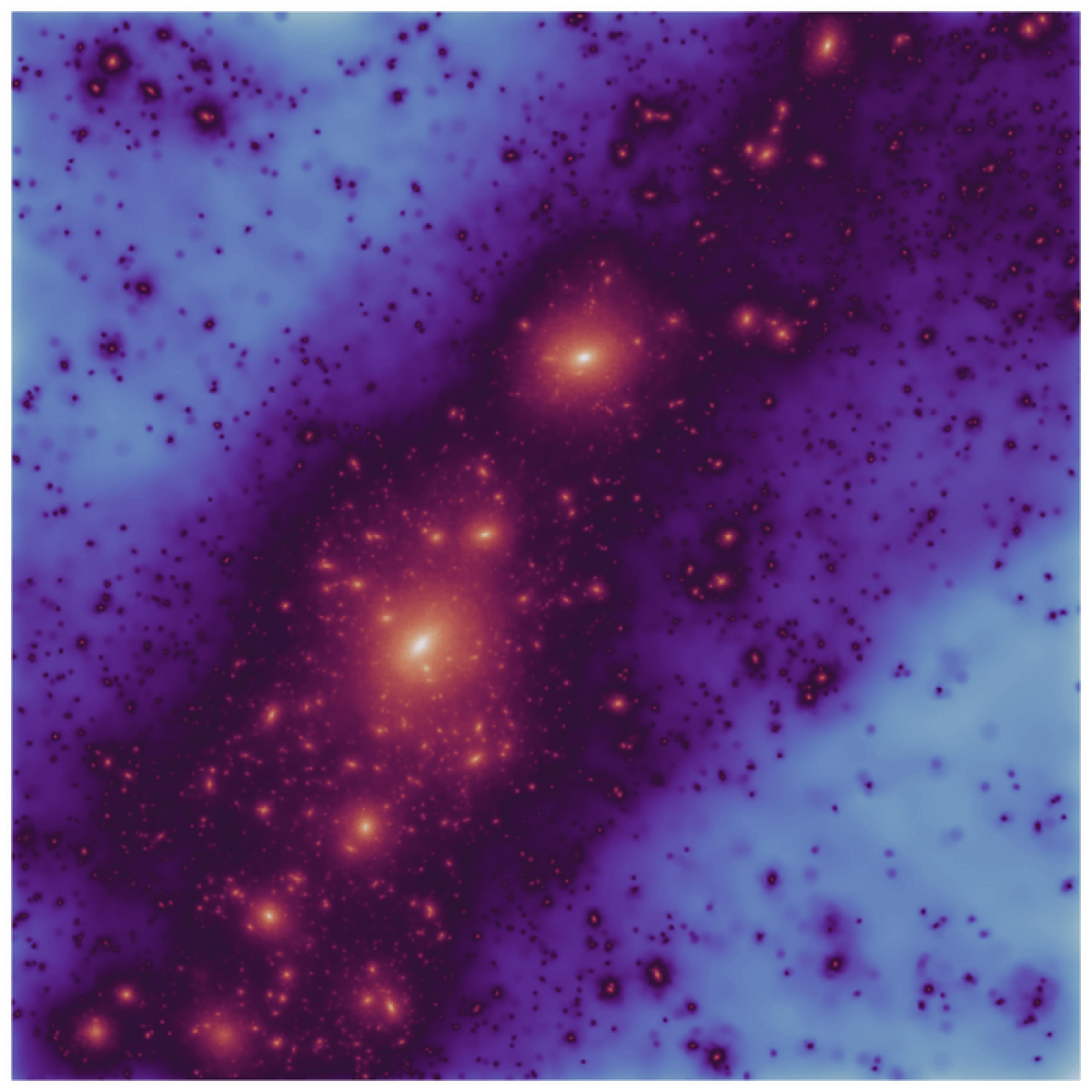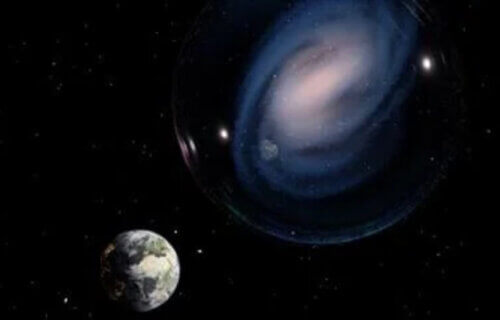RIVERSIDE, Calif. — Could Earth have a twin in a distant galaxy that looks just like ours? Scientists have made an astronomical discovery that disputes previous theories of galaxy formation. An international team of astronomers used NASA’s James Webb Space Telescope (JWST) to identify the most distant barred spiral galaxy similar to our Milky Way ever observed.
This newfound galaxy, ceers-2112, was formed shortly after the Big Bang. The research team, led by Luca Costantin of the Centro de Astrobiología (CAB), and including scientists from the University of California-Riverside, says their discovery challenges previous beliefs that galaxies like this one couldn’t be observed until the universe was much older.
A barred spiral galaxy, like our Milky Way, contains a central bar-shaped structure composed of stars akin to the structure of a candy bar in our everyday lives. While bars can be found in non-spiral galaxies, they are exceedingly rare. Galactic bars are fundamental in galaxy evolution, mixing chemical elements and fostering new star births. Their presence in ceers-2112 suggests that galaxies in the early universe could be as ordered as the Milky Way much earlier than previously thought.
“Unexpectedly, this discovery reveals that galaxies that resemble our own existed already 11,700 million years ago, when the universe had just 15% of its life,” says Costantin, a CSIC postdoctoral researcher at CAB and principal author of the study, in a statement.

The current estimated lifespan of the universe at 13,800 million years. That means the finding contradicts earlier theories which suggested that the universe needed to be at least half its current age to develop such complex structures.
“Finding ceers-2112 shows that galaxies in the early universe could be as ordered as the Milky Way,” says study co-author Alexander de la Vega, a postdoctoral researcher in the Department of Physics and Astronomy at the University of California-Riverside, in a university release. “This is surprising because galaxies were much more chaotic in the early universe and very few had similar structures to the Milky Way.”
Before the JWST, observations by the Hubble Space Telescope indicated that distant galaxies had irregular structures, often due to merging events. The JWST’s advanced capabilities have opened a new window into the universe’s past, revealing detailed morphology of distant galaxies.
“With JWST we have, for the first time, the technology to study the detailed morphology of very distant galaxies. This is essential to understand their history, opening the door to new scenarios about galaxy formation and evolution,” commented Cristina Cabello, a postdoctoral researcher at the Particle Physics and Cosmos Unit of The Complutense University of Madrid.
De la Vega played a crucial role in the research by estimating the redshift and properties of ceers-2112 and contributing to the interpretation of the measurements. Redshift, he explained, is an observable property of a galaxy that indicates its distance and how far back in time it is seen, due to the finite speed of light.

What surprised de la Vega the most about this discovery was the accuracy with which the properties of ceers-2112’s bar could be determined.
“Initially, I thought detecting and estimating properties of bars in galaxies like ceers-2112 would be fraught with measurement uncertainties,” says de la Vega. “But the power of the James Webb Space Telescope and the expertise of our research team helped us place strong constraints on the size and shape of the bar.”
The discovery of ceers-2112 necessitates a revision of current theories on galaxy formation and evolution. It’s expected to have significant implications for the field of astronomy, de la Vega adds.
“First, theoretical models of galaxy formation and evolution will need to account for some galaxies becoming stable enough to host bars very early in the universe’s history. These models may need to adjust how much dark matter makes up galaxies in the early universe, as dark matter is believed to affect the rate at which bars form,” he explains. “Second, the discovery of ceers-2112 demonstrates that structures like bars can be detected when the universe was very young. This is important because galaxies in the distant past were smaller than they are now, which makes finding bars harder. The discovery of ceers-2112 paves the way for more bars to be discovered in the young universe.”
The study is published in the journal Nature.
You might also be interested in:
- Listen to this eerie echo coming from Milky Way’s supermassive black hole
- Simulated universe hypothesis: Are we really living in a Matrix-like computer simulation?
- JWST discovers pearl-like string of ancient galaxies


I think the 13.8 million years was a typo because the known universe is 13.8 billion years old.